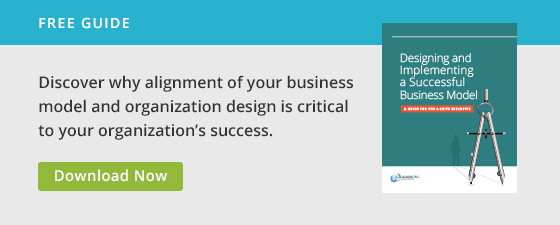Ever gone to a conference and heard stories from other great organizations about the innovative practices they are implementing? Ever come away from those conferences thinking, “How can I help our organization become an industry leader in such-and-such a practice?” If you have experienced these thoughts, you are not alone – many business and function leaders in organizations are constantly looking for the next best thing that will help their organization perform even better.
Best practices are an appealing treasure that business and function leaders like to collect and implement; however, while organizations can certainly use best practices to increase their marketplace value, at times they can become a distraction and a resource diversion from truly differentiating activities. To fully benefit from best practices, organizations must stop chasing every new solution and instead, only select those that will drive their organization’s strategy and create further marketplace differentiation.
As business support functions such as IT, procurement, and finance become mature disciplines, the pressure to be on the leading edge of functional best practices mounts. However, for many companies, efforts to stay on par with leading practices have become a “keeping up with the Joneses” pursuit with the goal of achieving functional excellence. As a result, business leaders tend to feel like their support functions are constantly introducing new processes, services, and applications that may or may not help the business achieve results and differentiate in the market.
Continuous improvement is one thing, but continual chasing of the next best practice is another. If the direct connection to strategy for a specific best practice can’t be established, then one should question whether that best practice is really a “best” practice. At AlignOrg Solutions, one of the first things we do when we engage with a client is help them properly identify what activities directly drive their organizational strategy and lead to greater market differentiation (strategic activities) and those that play more of a supporting role (essential activities). Strategic activities lead to differentiation and greater marketplace returns than the balance of the essential work of an organization. The more an organization invests in strategic activities, the more they can see their marketplace position strengthen and grow.
So, what does this mean for functional best practices? A best practice is only a best practice if it is a strategic activity for the organization or, at a minimum, enables strategic work. Just because something is deemed a best practice at a conference doesn’t make it a strategic best practice for your organization. Fit is the key – strategic fit. More often than not, companies would be better off ensuring that support functions are “at par” with the market, focus on achieving cost efficiencies, and invest their resources in the strategic areas of the business.
The checklist below helps organizations determine if a given investment in a best practice for a support function is worth it:
- Put on your strategic business hat. What role should my function play to help the overall business win in the marketplace? Is the new best practice necessary to fulfill that role? If so, go after it! If not, the time, money, and personnel necessary to implement a new system/solution may be exactly what the organization does NOT need (and that time, money, and personnel will be better spend on other strategic activities in the business).
- Get to Par. Is the function on par with the market? If the function is delivering an acceptable level of support that isn’t substantively different than competitors, you are probably better off spending your money somewhere else.
- Avoid the Functional Excellence Trap. Is the new best practice a want, a need, or maybe just a little self-aggrandizement? It is completely natural to want to be the best function possible by seeking out and implementing the latest and greatest solutions. However, that may not help your overall organization become the best that it can be. Fight the urge to make your wish list into a “must-have” list when it won’t deliver a win to the organization as a whole.
- Leave Yourself Staffing Options. Almost every functional leader says that they need more staff. Take a critical look at your current staff and ask yourself, “Do I need more staff to do what I want to do, or what the business needs to do to differentiate and win?” Keeping fixed staffing levels low and flexing with temporary or contract staff will help ensure that resources aren’t misallocated and/or diverted across the business when they could be invested into strategic work.
- Buy or Borrow to Build. Don’t rush to hire and then build. If a new best practice is absolutely needed, what will it take to get the new solution up and running and how many FTEs will be necessary to maintain it? Many organizations go on a hiring spree to build the new solution and then have several underutilized staff after it is built. Consider other ways to temporarily staff your function while you build the new solution. Doing so will save money in the long run and avoids having unnecessary headcount that you will be faced with keeping busy by seeking for, building, and implementing the next best practice on your list.
Wanting to improve your function or needing to implement a best practice to get on par with your industry is not a bad thing. However, when the allure of best practices causes support functions to constantly chase new solutions, organizations run the risk of burning through valuable resources, time, energy, and organizational capacity for an investment that cannot deliver a competitive advantage or increased marketplace distinctiveness.
Before considering a new best practice for your organization—and especially a new solution for a support function—revisit the checklist above and be honest with yourself about the role a function plays in your overall strategy.
Making trade-offs, like saying “no” to a new solution, is hard, but doing so can create substantive marketplace growth while simultaneously cutting costs and improving efficiencies.






